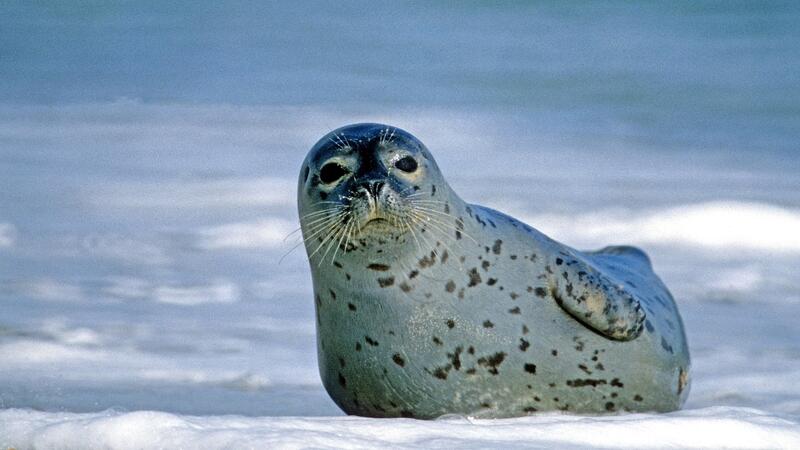Wadden Sea harbour seals bear more pups than ever

The Wadden Sea harbour seal population remains stable, with 25,000-27,000 individuals counted yearly since 2012. 2018 has been yet another record year for pups, registering the highest count since 1975 with a total of 9,285 observed new-borns. These are the main findings of the report “Aerial surveys of Harbour Seals in the Wadden Sea in 2018”, published by the Trilateral Seal Expert Group (TSEG) of the Trilateral Wadden Sea Cooperation and based on trilaterally coordinated surveys in the Danish, Dutch and German parts of the Wadden Sea World Heritage site.
“We are very satisfied with what we are observing – a stable and viable harbour seal population,” states Sascha Klöpper, Deputy Executive Secretary of the Common Wadden Sea Secretariat (CWSS). “The harbour seal population underwent severe disturbances in the past decades, from human activities and habitat loss to outbreaks of the phocine distemper virus in 1988 and 2002. Building on the conservation measures of the past decades, we recently adopted a new Seal Management Plan for the 2018-2022 period to ensure that seals can also thrive here in the future.” The plan outlines how conservation and management of both harbour and grey seal populations in the Wadden Sea can be achieved through common, coordinated measures by Denmark, Germany and the Netherlands.
In order to observe both adult harbour seals and pups, the TSEG conducts its trilateral counts twice each year: total numbers of harbour seals are generally counted during the moulting season, when they spend substantially more time on land, while new-borns are monitored during pupping season. During the moult in August 2018, 2,675 seals were counted in Denmark (-10% compared to 2017) and 8,058 in Lower Saxony and Hamburg (+10% from 2017). The trends in numbers may be the result of a change in the survey date, varying numbers of seals hauling out, or a shift in the spatial distribution of seals over time. Due to military activities an area in the Netherlands was closed off for surveys, leading to only a partial count of 6,774 individuals. Schleswig-Holstein could not be surveyed due to unfavourable weather conditions on the survey days. If counts of 2017 were used for Schleswig-Holstein (8,834) and the Netherlands (adding 1,151 for the area that was not surveyed in 2018) the estimated total number of counted harbour seals in the Wadden Sea would be 27,492. Keeping in mind that not all seals are on land at any given time, the seal experts added a correction factor to this number and gave an estimation of a total population size of harbour seals in the Wadden Sea of about 40,000 in 2018.
During the 2018 pupping season in June 9,285 pups were counted, which is the highest number registered since 1975. Divided into regions, a 15% increase was observed in Schleswig-Holstein with 4,576 pups counted. In Denmark, 560 pups were counted (23% fewer than in 2017). In Lower Saxony and Hamburg the trend remained stable with 2,158 and a decrease of 2% compared to 2017. As with the counts of adult individuals, one area in the Netherlands was not surveyed due to military activities. In the remaining areas, 1,991 pups were counted. Leaving out the excluded area, the number of pups observed in the entire Wadden Sea in 2018 still constitutes an increase to last year’s count of 9,167. The experts assume the actual increase to be even larger.
As the rising pup numbers deviate from the stagnating adult numbers, Richard Czeck, National Park Authority Lower Saxony and Chairperson of the TSEG, concludes that “further investigation of monitoring data from the years to come will be necessary to better explain and predict the population development. The coordinated counts over three countries are of great value for understanding such dynamics”.
Harbour seals, as well as grey seals, are one of the iconic species of the region. As part of the Trilateral Wadden Sea Cooperation, the Trilateral Seal Expert Group (TSEG) coordinates the counts and harmonizes the data from across the Wadden Sea region. The harbour seal is trilaterally protected under the Agreement on the Conservation of Seals in the Wadden Sea (WSSA) concluded under the auspices of the UN Convention on the Conservation of Migratory Species of Wild Animals (CMS). CWSS acts as the secretariat of WSSA.
